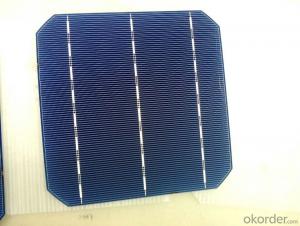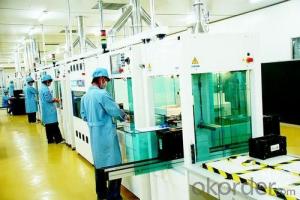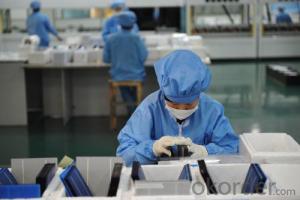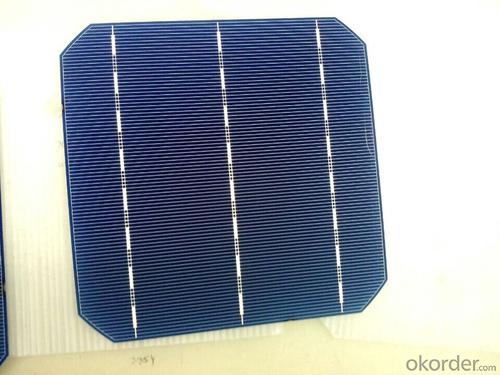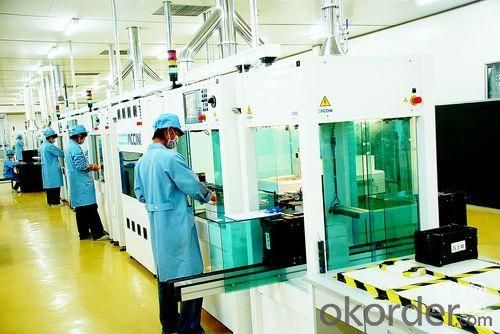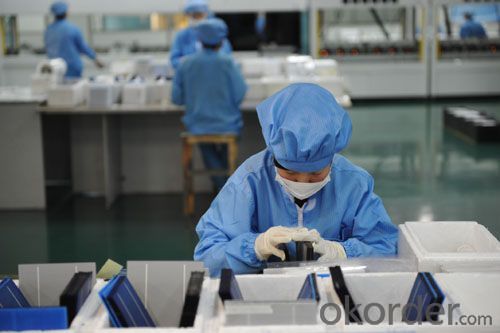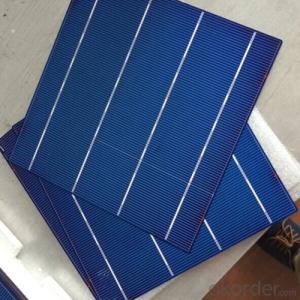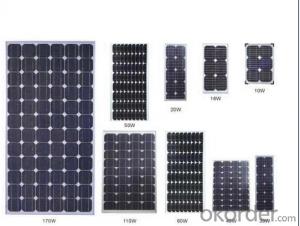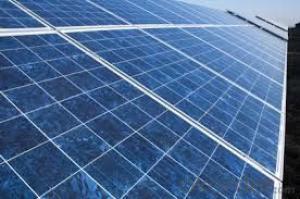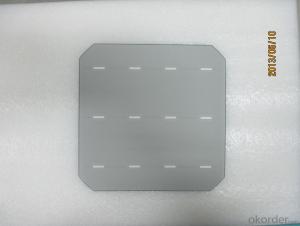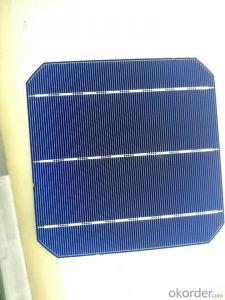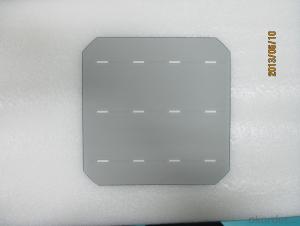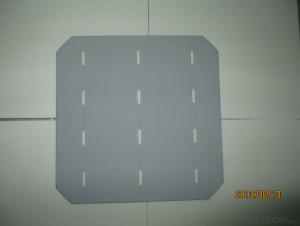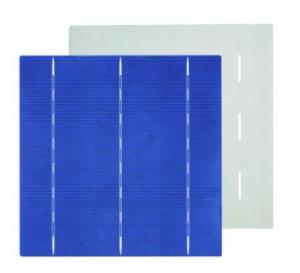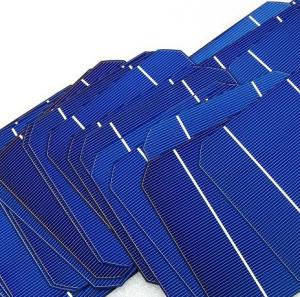Stackable Solar Cells - 156*156mm Monocrystal Solar Cell with 4.65 Watt High Efficiency
- Loading Port:
- Shanghai
- Payment Terms:
- TT or LC
- Min Order Qty:
- 1000 pc
- Supply Capability:
- 20000000 pc/month
OKorder Service Pledge
OKorder Financial Service
You Might Also Like
Brief Introduction of Solar Cells
A solar cell, is an electrical device that converts the energy of light directly into electricity by the photovoltaic effect, which is a physical and chemical phenomenon. It is a form of photoelectric cell, defined as a device whose electrical characteristics, such as current, voltage, or resistance, vary when exposed to light. Solar cells are the building blocks of photovoltaic modules, otherwise known as solar panels.
Monocrystal solar energy cell
Type:156M
Appearance:156×1565㎜±0.5mm; Diagonal:R=100mm
Main fence wide:1.4-1.5mm Back electrode wide:2-2.5mm
Fence line qty:90
Cell thickness:220um±20um
Eff(%) | 19.0- 19.1 | 19.1- 19.2 | ||||||||||
Pm(W) | 4.54 | 4.56 | ||||||||||
Isc(A) | 8.9 | 8.93 | ||||||||||
Im(A) | 8.47 | 8.51 | ||||||||||
Voc(V) | 0.638 | 0.64 | ||||||||||
Vm(V) | 0.537 | 0.538 | ||||||||||
FF(%) | 80 | 80 |

remark:our company cells as per working current concentrate principle,separate the first and the second grade
Advantage of Polycrystalline Solar Cells
World’s Leading Manufacturer Equipment. We imported the newest and leading production equipment from abroad. Advanced equipment can guarantee the stable quality of cells. Auto production line can also save labor cost which will further cut our production cost.
Bulk supply: With the production capacity of 500MW, we can produce large quantity every month. This can satisfy most customer requirement.
Factory Picture of Solar Cells
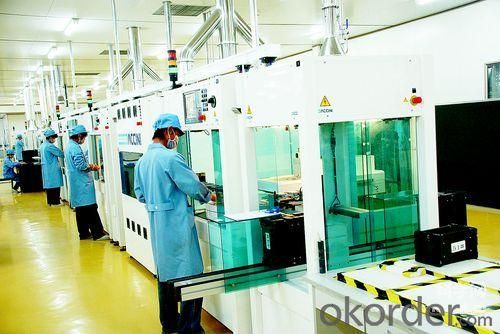
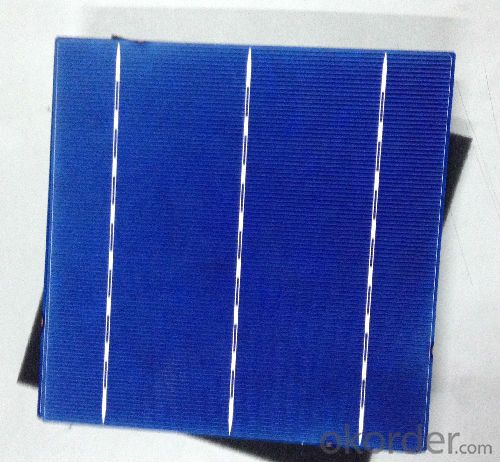
FAQ
We have organized several common questions for our clients,may help you sincerely:
What’s price per watt?
A: It’s depends on the quantity, delivery date and payment terms of the order. We can talk further about the detail price issue. Our products is high quality with lower price level.
Can you tell me the parameter of your solar cells?
We have different series of cells with different power output, both from c-si to a-si. Please take our specification sheet for your reference.
How do you pack your products?
We have rich experience on how to pack the panels to make sure the safety on shipment when it arrives at the destination.
Can you do OEM for us?
Yes, we can.
How long can we receive the product after purchase?
In the purchase of product within three working days, We will arrange the factory delivery as soon as possible. The perfect time of receiving is related to the state and position of customers. Commonly 7 to 10 working days can be served.
- Q: How do solar cells perform in areas with high levels of dust?
- Solar cells can be affected by high levels of dust in areas. The accumulation of dust on the surface of solar cells can reduce their efficiency by blocking sunlight and reducing the amount of energy they can generate. Regular cleaning and maintenance are required to ensure optimal performance in dusty environments.
- Q: What is a polymer solar cell and how does it work?
- Polymer solar cells are actually like all the other solar cells, the polymer solar cell converts light into electricity, by converting light into a current.
- Q: How much does a solar cell weigh?
- The weight of a solar cell can vary depending on its size and design. On average, a standard solar cell weighs between 3 to 4 ounces (85 to 113 grams).
- Q: How to make solar cells in a scientific way?
- As far as I can remember, you do need some salt for making solar cells.
- Q: What is the impact of solar cell installations on property values?
- The impact of solar cell installations on property values is generally positive. Studies have shown that homes with solar panels tend to sell for higher prices and have faster selling times compared to similar homes without solar installations. Solar energy is becoming increasingly popular and homeowners recognize the financial benefits of reduced energy costs and potential tax incentives. Additionally, solar installations contribute to a more sustainable future, which is an attractive quality for many buyers.
- Q: Are solar cells environmentally friendly?
- Yes, solar cells are environmentally friendly. They produce clean and renewable energy by harnessing sunlight, which reduces dependence on fossil fuels and lowers greenhouse gas emissions. Additionally, solar cells do not produce any air or water pollution during operation, making them a sustainable and eco-friendly energy source.
- Q: What is the future of solar cells?
- The future of solar cells looks promising, as advancements in technology continue to improve their efficiency, affordability, and versatility. With ongoing research and development, we can expect to see solar cells become even more efficient in converting sunlight into electricity, allowing for greater energy production. Additionally, innovations in materials and manufacturing techniques may lead to more cost-effective production methods, making solar cells more accessible to a wider range of consumers. Furthermore, integration of solar cells into various surfaces and structures, such as windows, clothing, and vehicles, will likely expand their applications and increase their adoption. Overall, the future of solar cells appears to be characterized by higher efficiency, lower costs, and increased integration, leading to a greater contribution to our global energy needs.
- Q: Can solar cells be used for powering agricultural irrigation systems?
- Yes, solar cells can be used for powering agricultural irrigation systems. Solar energy can be harnessed by installing solar panels that convert sunlight into electricity, which can then be used to power pumps and other equipment necessary for irrigation. This renewable energy source offers a sustainable and cost-effective solution for powering agricultural practices, especially in areas with limited access to electricity.
- Q: Can solar cells be used in airports?
- Yes, solar cells can be used in airports. They can be installed on rooftops, canopies, or other open spaces in airports to generate clean and renewable energy for various purposes such as lighting, power supply, and charging stations. Additionally, solar cells can contribute to reducing the carbon footprint and overall energy costs of airports.
- Q: Can solar cells be used to power homes?
- Yes, solar cells can be used to power homes. Solar photovoltaic (PV) systems convert sunlight into electricity, which can then be used to power various appliances and lighting in households. These systems typically consist of solar panels installed on rooftops or other sunny areas, along with inverters and batteries to store excess energy for use during non-sunny periods or at night. With advances in technology and decreasing costs, solar power has become an increasingly viable and sustainable option for homeowners to generate their own electricity.
Send your message to us
Stackable Solar Cells - 156*156mm Monocrystal Solar Cell with 4.65 Watt High Efficiency
- Loading Port:
- Shanghai
- Payment Terms:
- TT or LC
- Min Order Qty:
- 1000 pc
- Supply Capability:
- 20000000 pc/month
OKorder Service Pledge
OKorder Financial Service
Similar products
Hot products
Hot Searches
Related keywords
